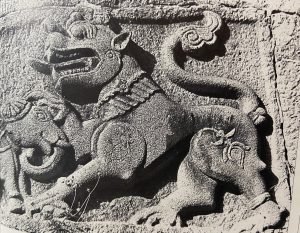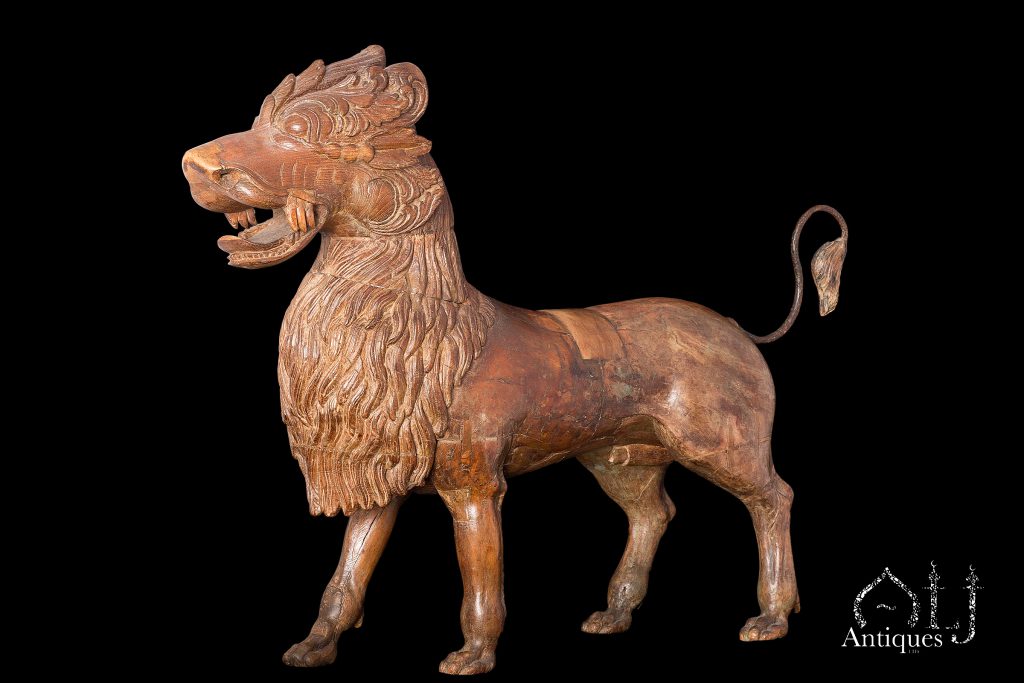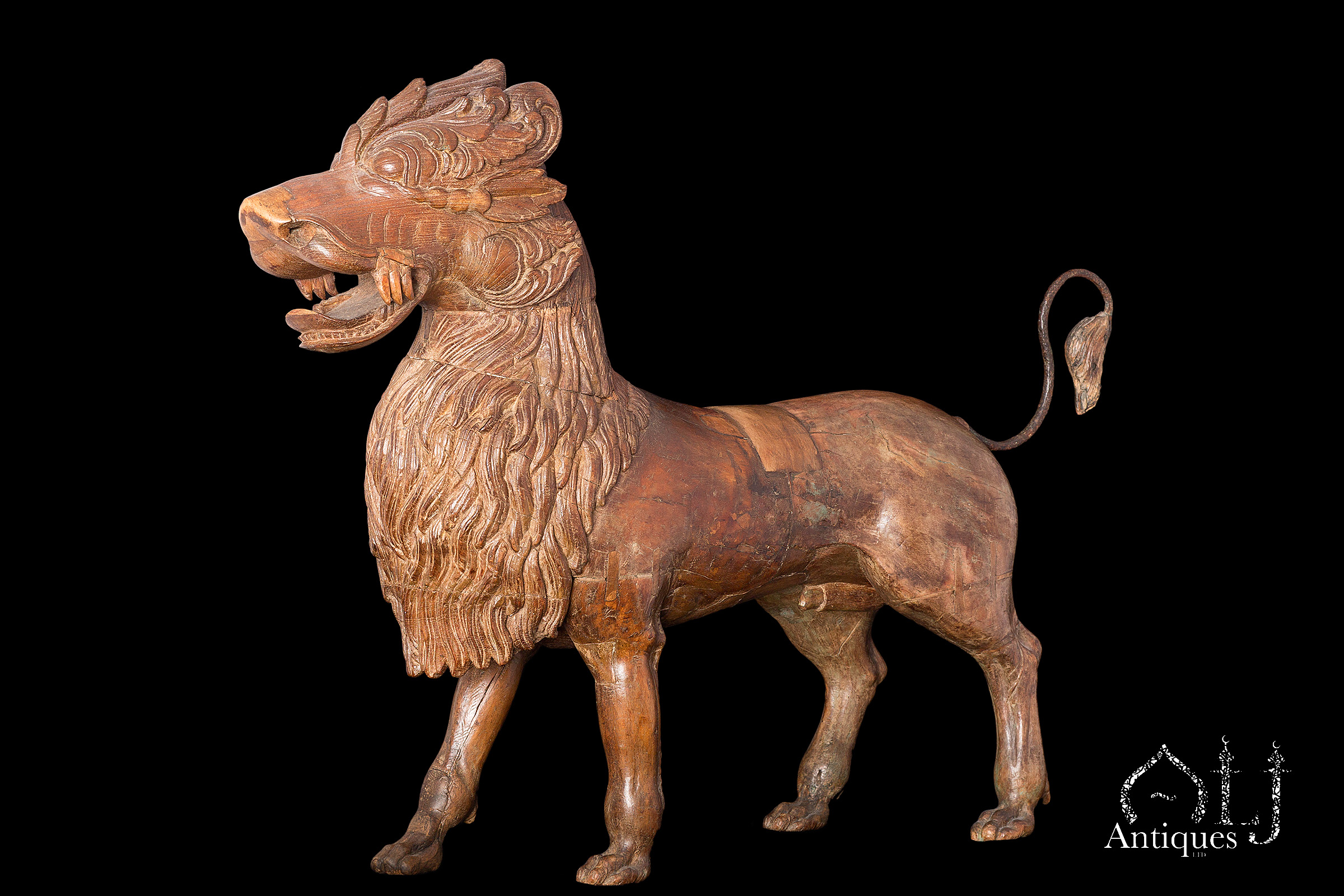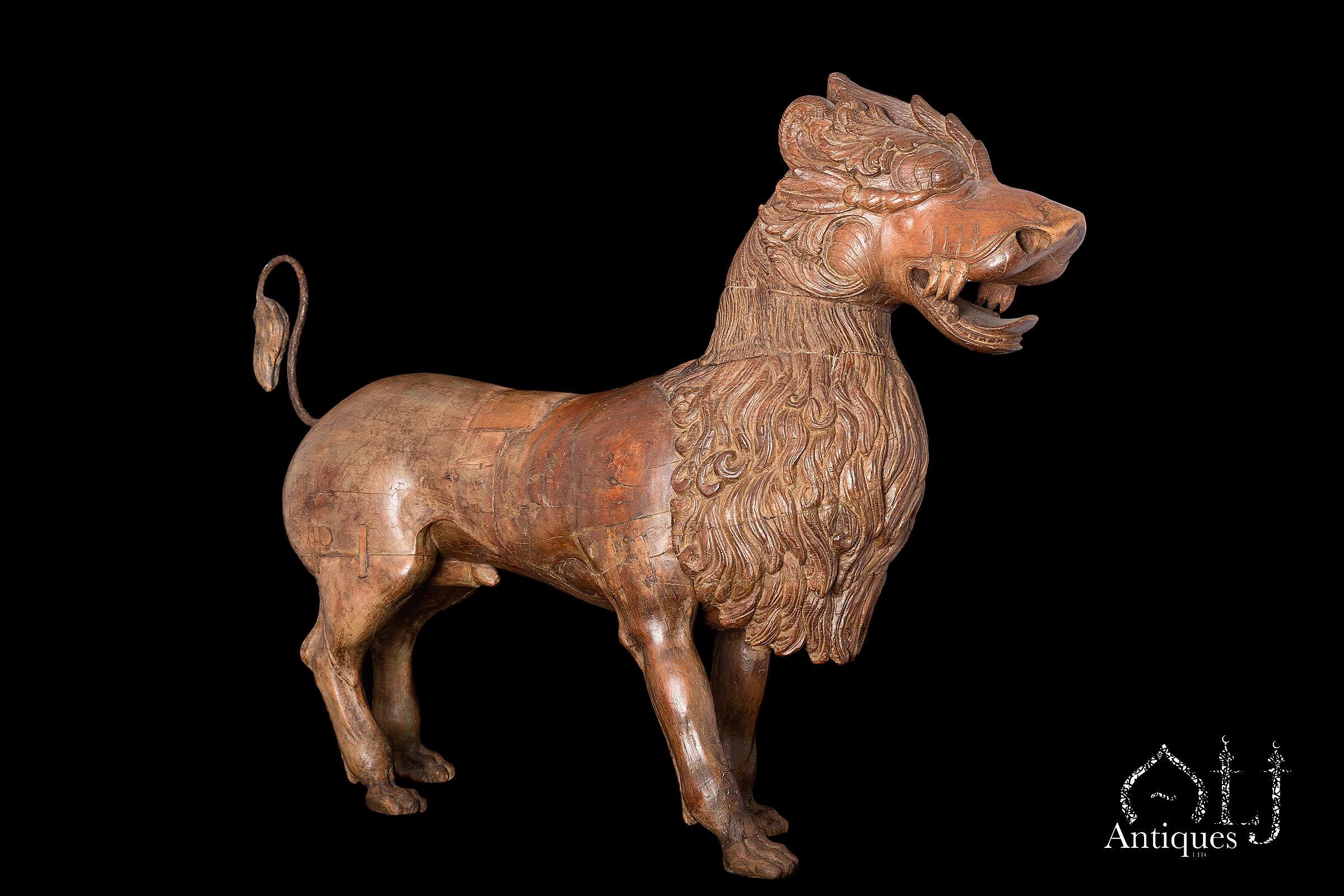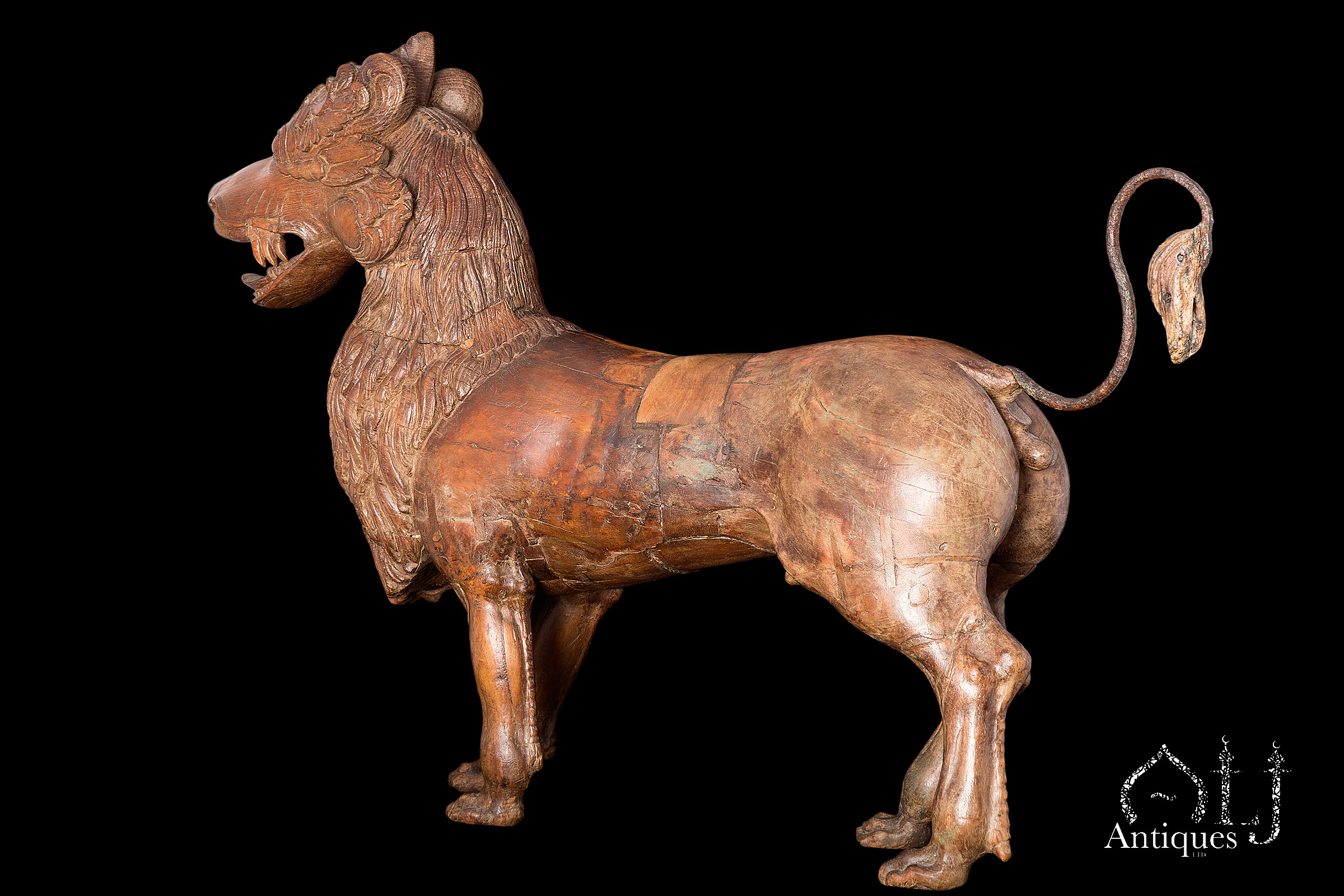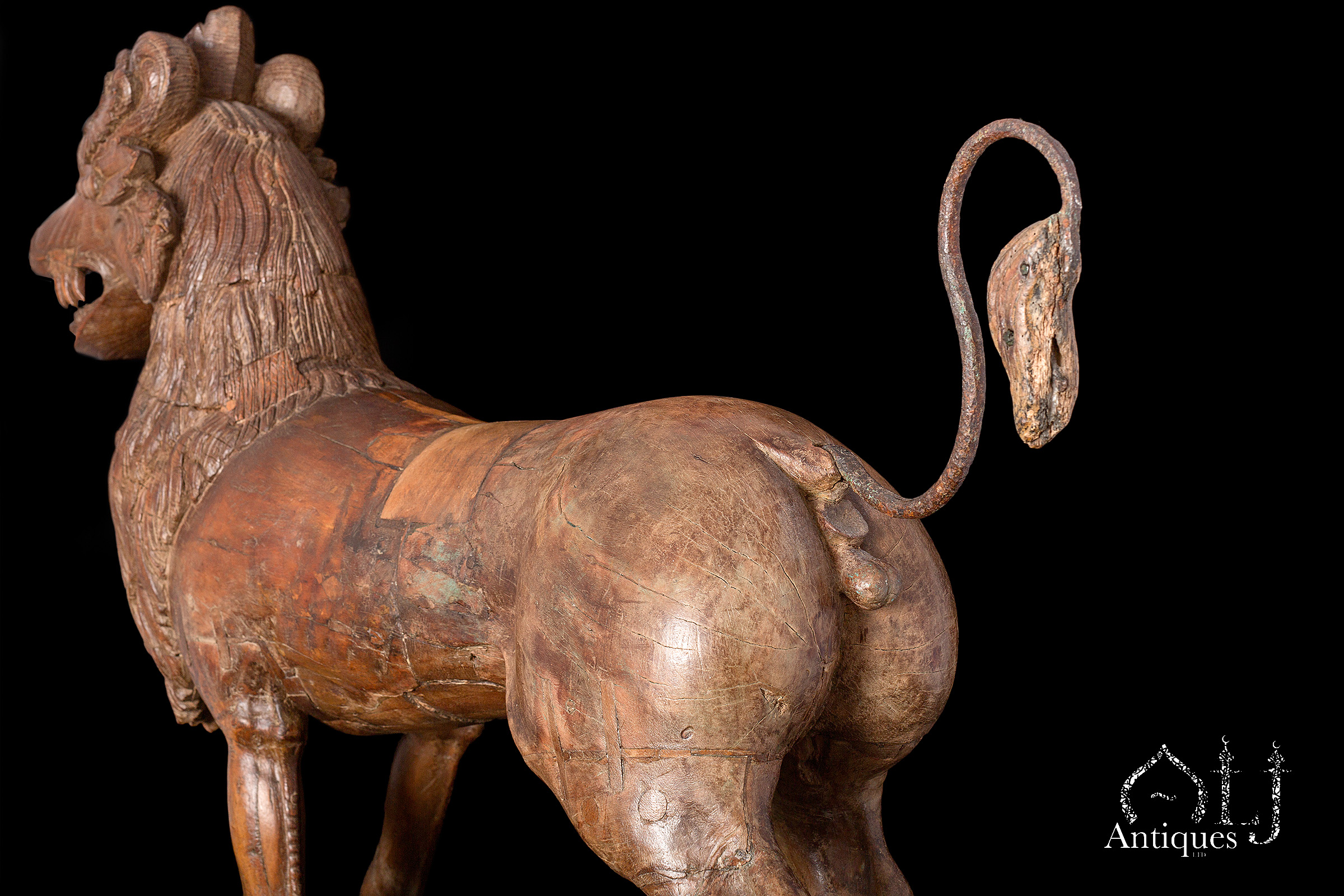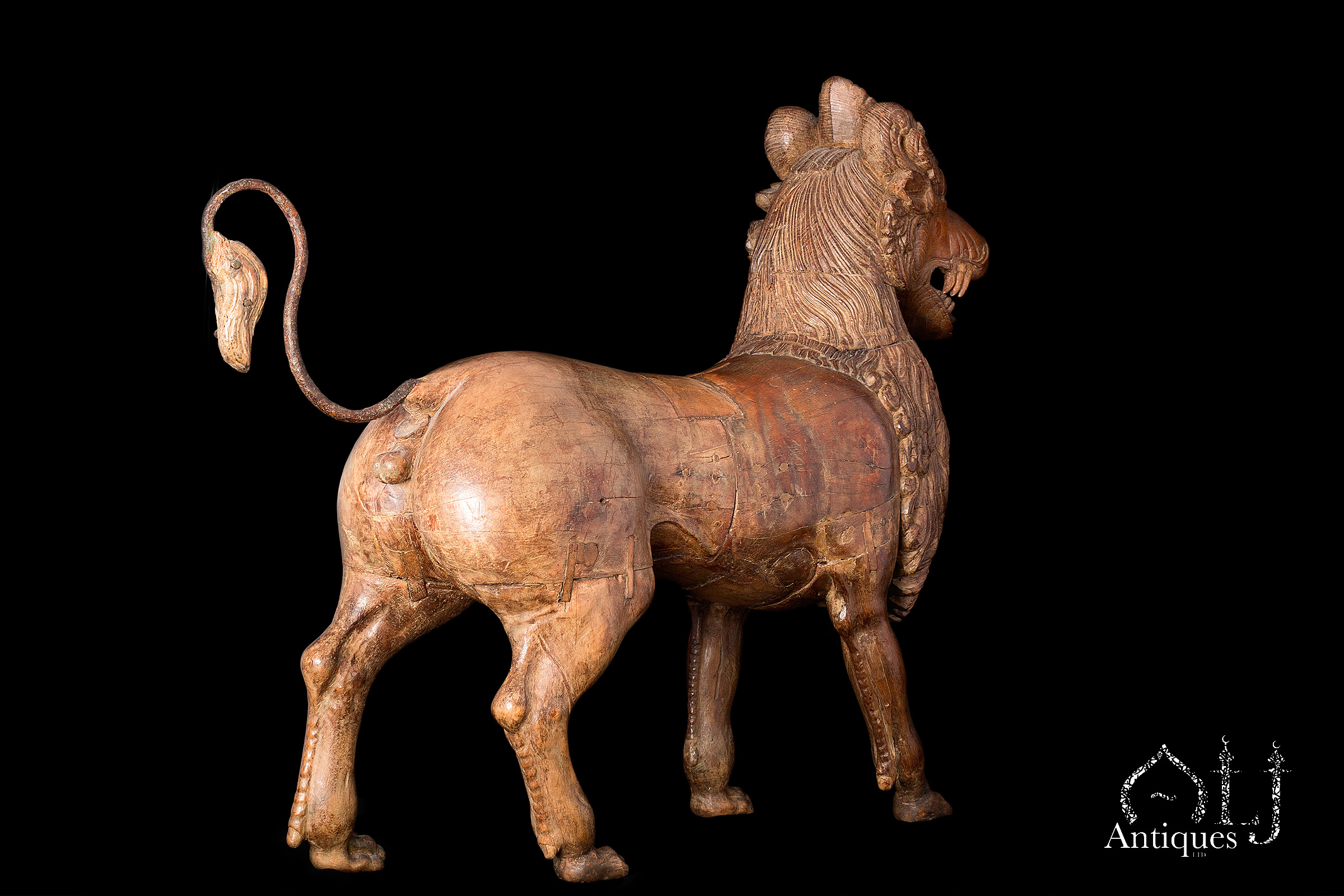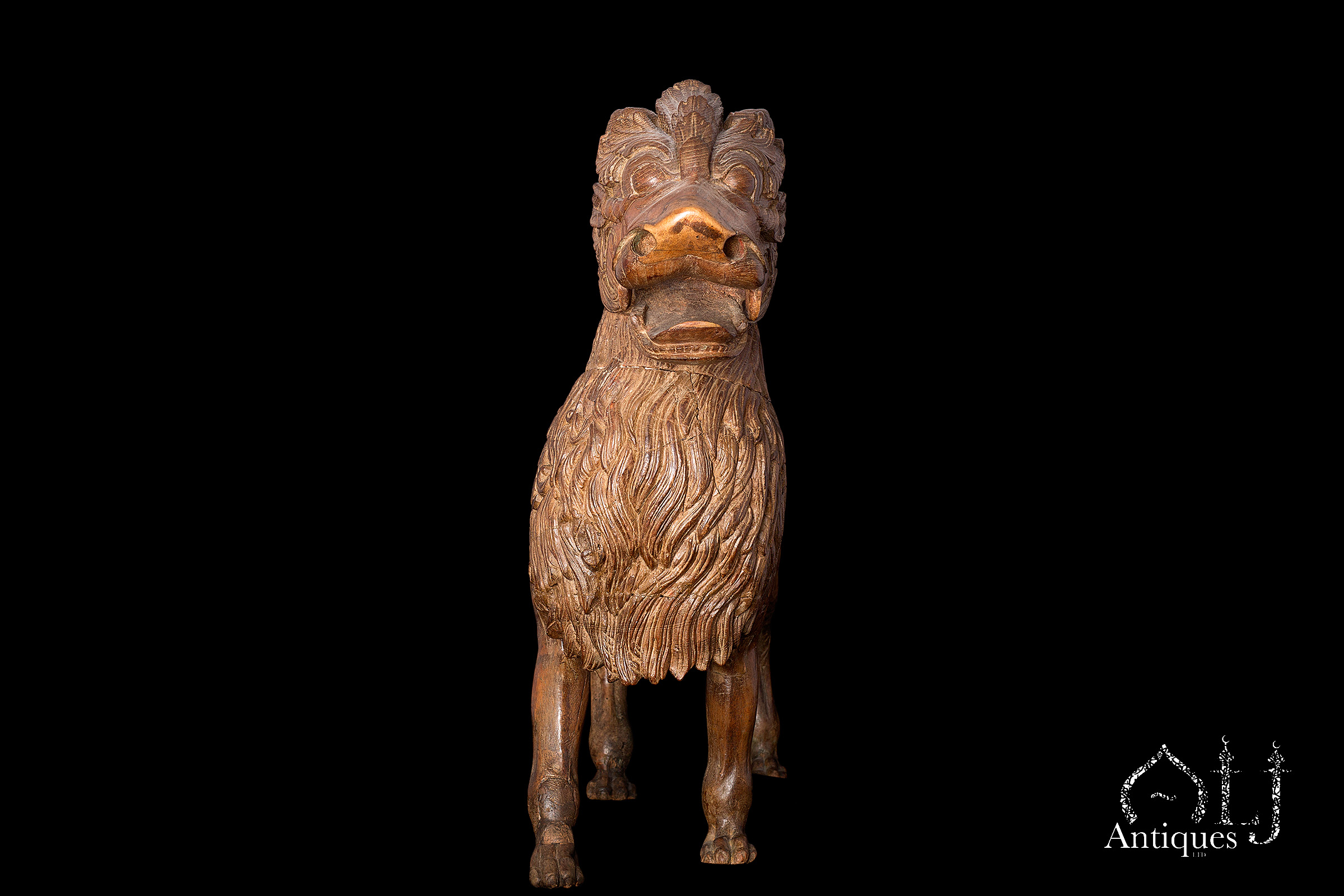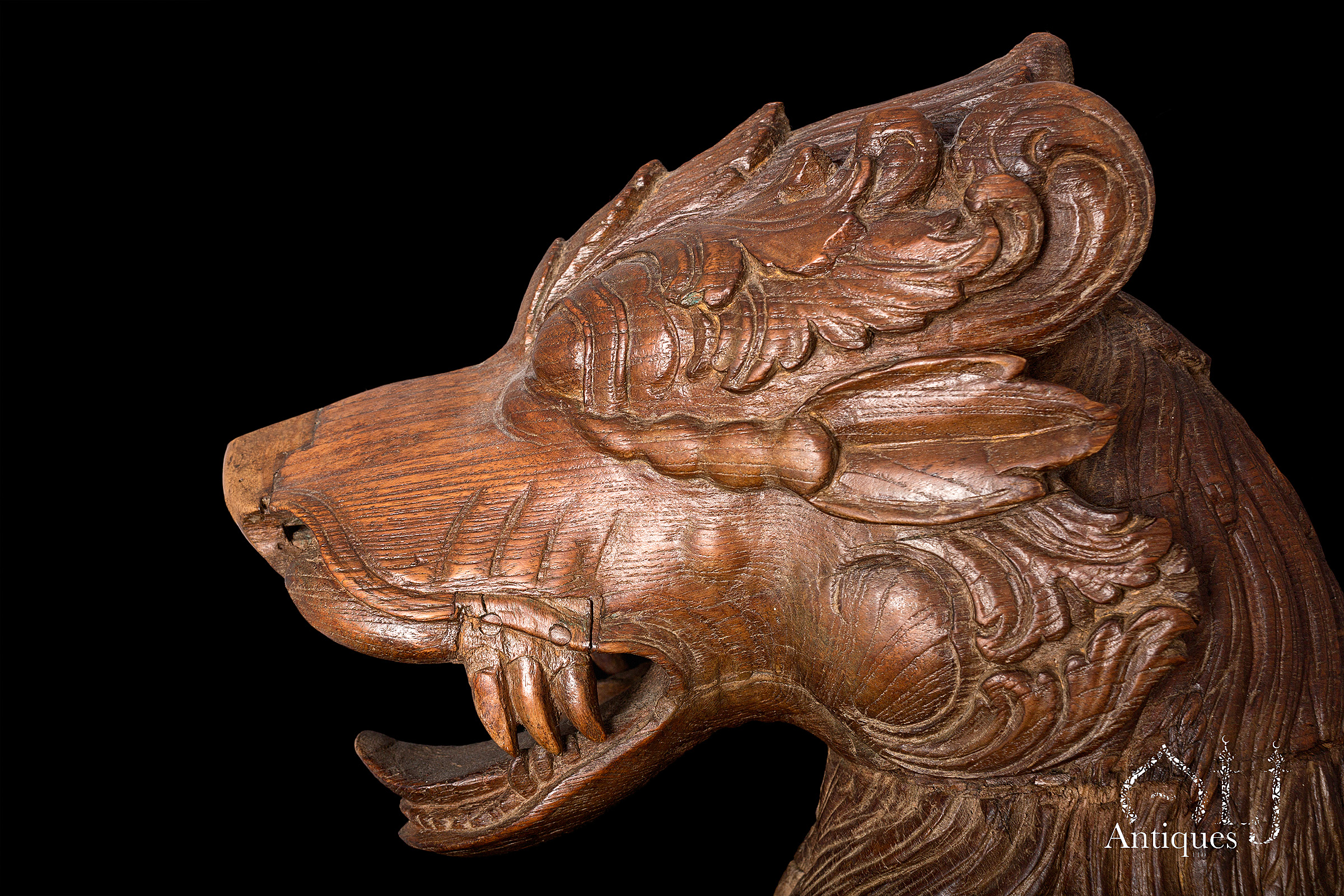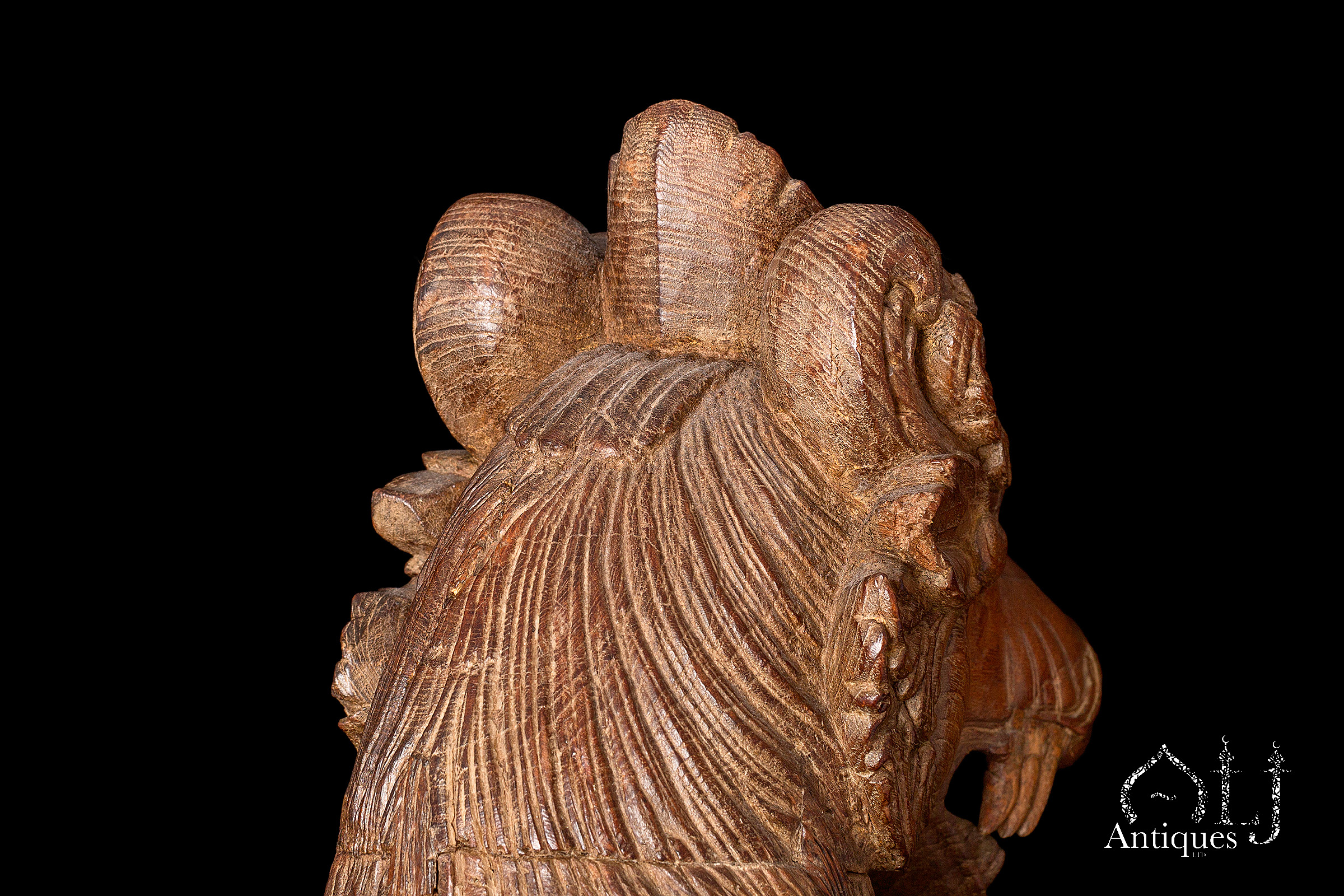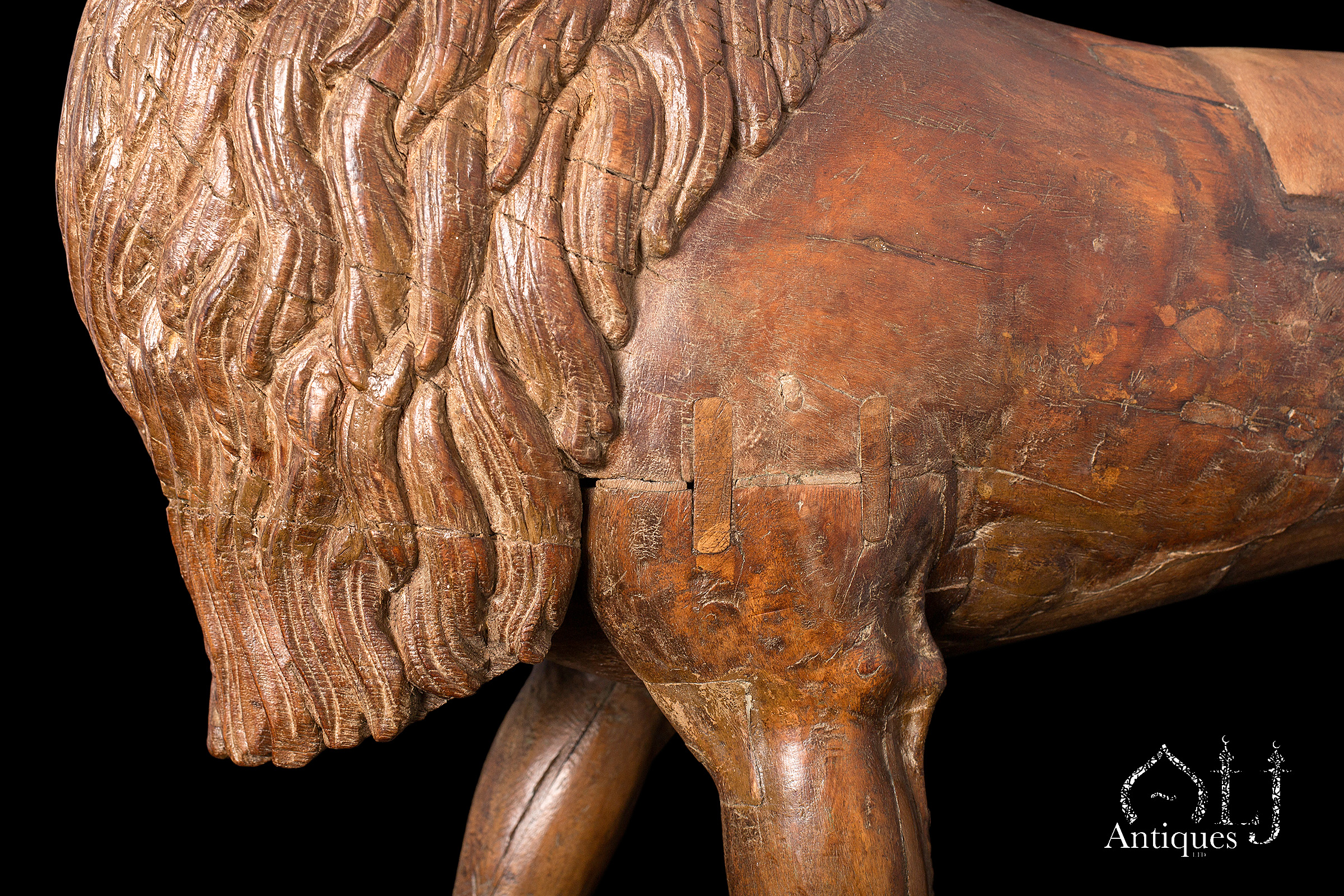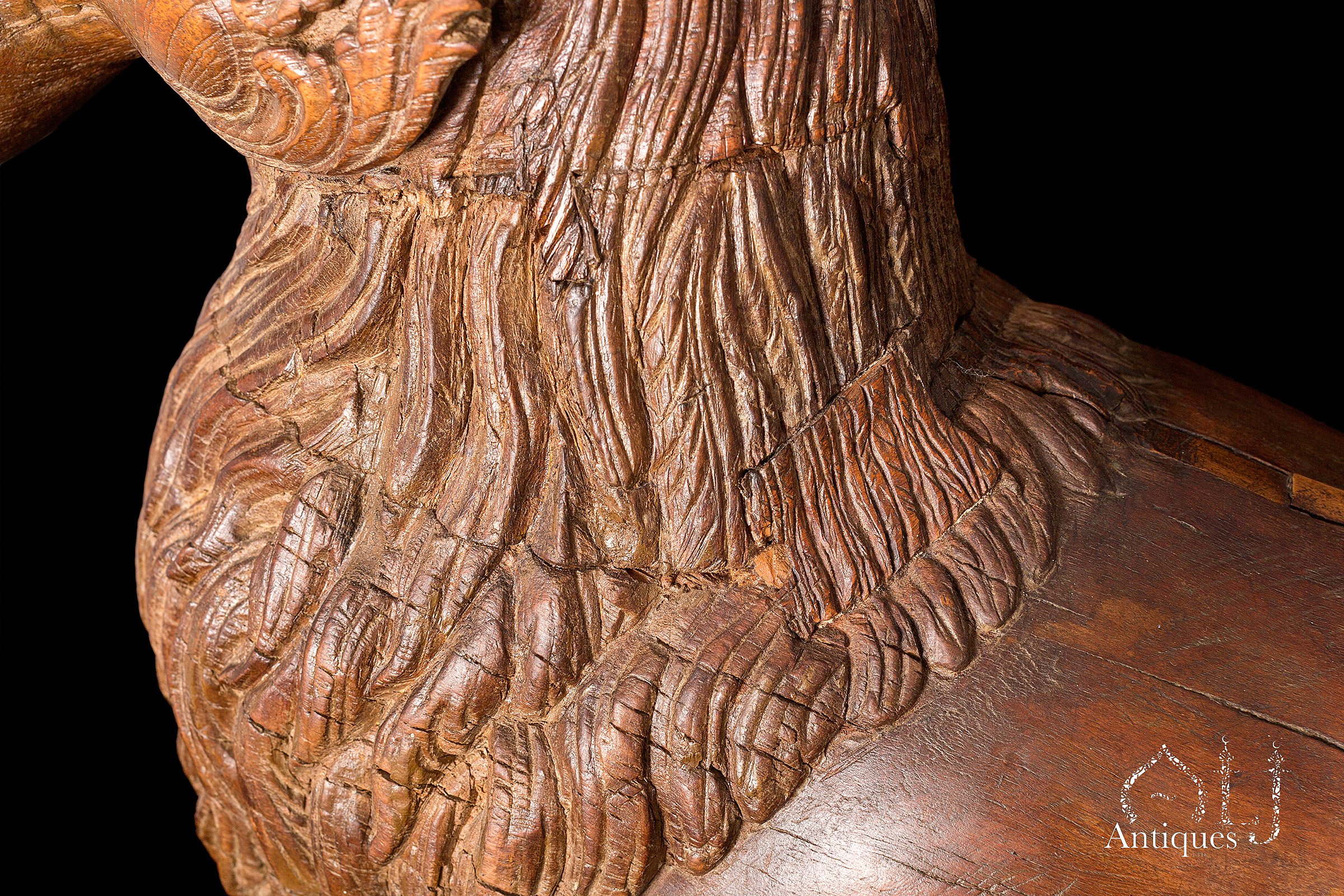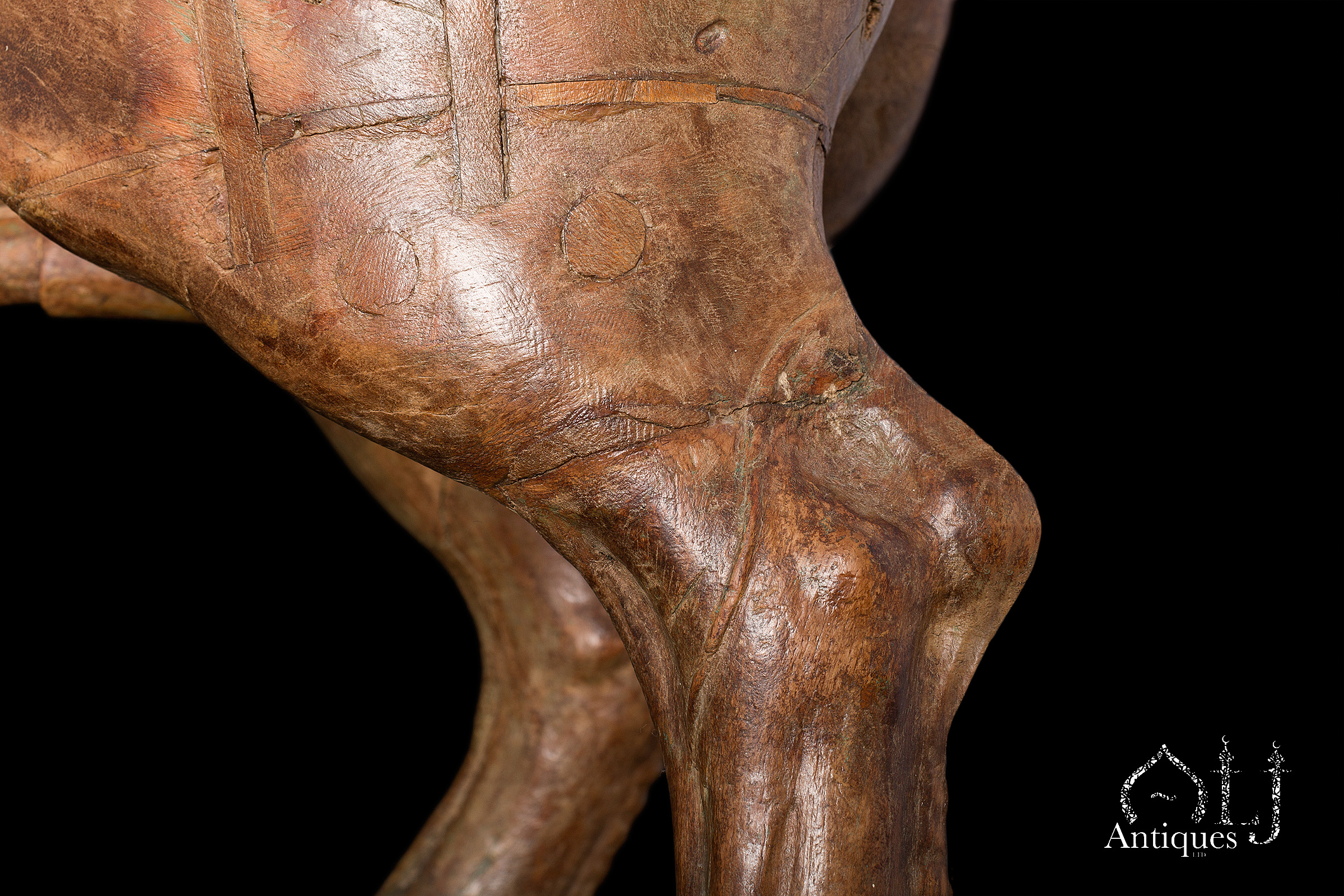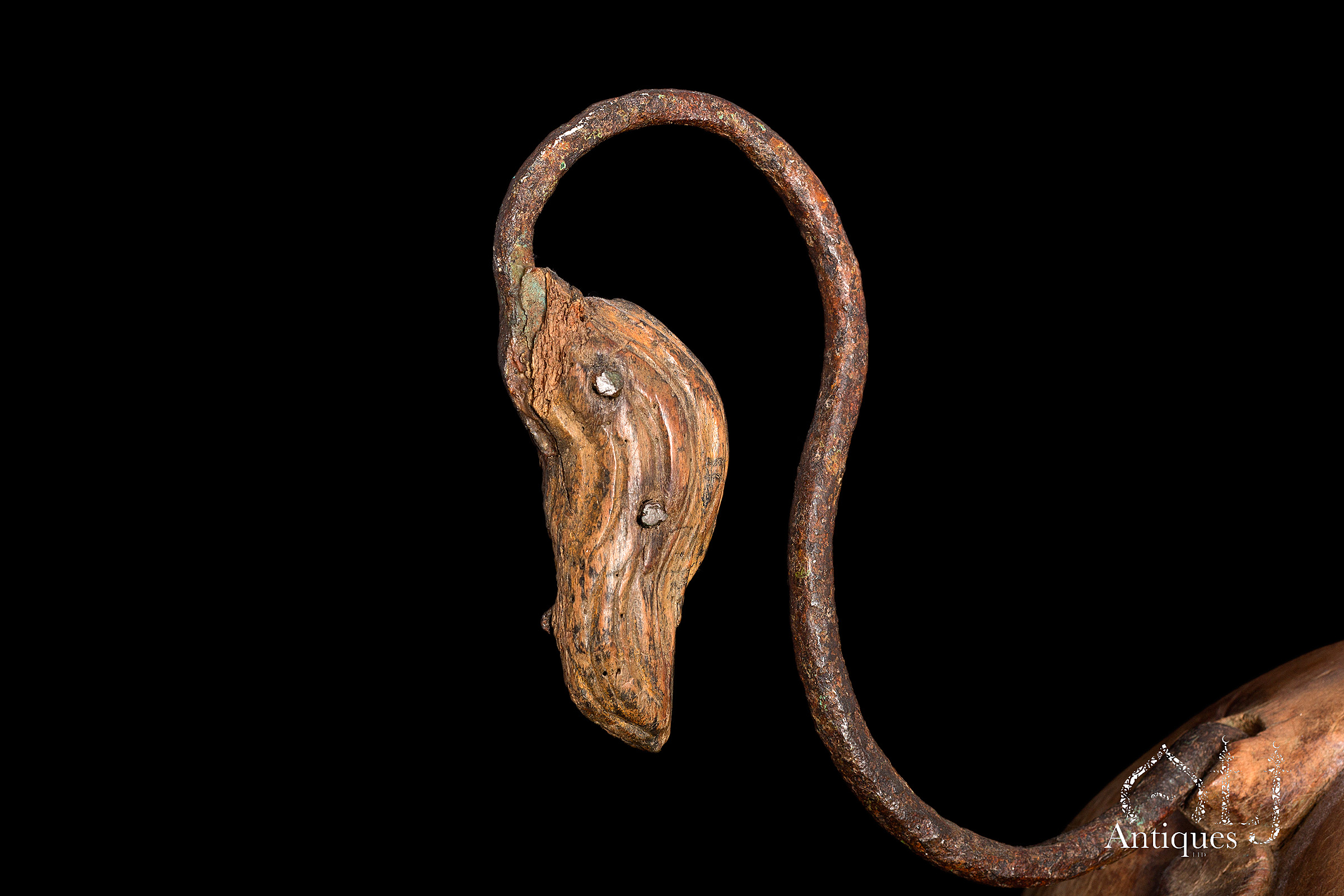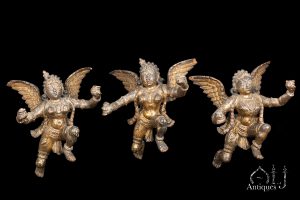Description
Lions have been used as symbols of strength and power in various world cultures, particularly as guardians for royalty and individuals of high status in society. This tradition is no different in India and the wider Islamic world.
In India, due to the diverse cultures, beliefs, backgrounds, and religions that coexisted in close proximity, there were various styles, shapes, and purposes for depicting lions. These artistic representations reflect the interaction between these different cultures and the similarities found in lion depictions.
South India, in particular, extensively used lions as zoomorphic decorations in Indian art. Lions were used by both Buddhism and Hinduism in the architecture of temples, and mythical lion-like creatures such as the Yali or Vyala, thought to be more powerful than regular lions, were prevalent, as well as another related mythical lion like creature know as the Simha-lion.
The Mythical Hindu Yali is usually more Prominent in south of India and is considered stronger than a conventional lion and it is depicted by a lion’s head and mane, an elephant’s trunk and tusks, a pair of horns, and a serpent’s tail.. for the depiction of the Tamil Nadu Yali, such as the Carved or sculpted stone pillars at the Meenakshi, (Madurai Meenakshi Amman) Temple, located in the holy city of Madurai, south India.
The Yali is stronger than the usual lion, for it has the head and the manes and graceful body of the lion also the Yali has the ferociousness, strength and speed of the lion, in this form it is called a Gaja-vyala, the elephant-vyala, whereas the lion-headed type of Yali is called Simha-vyala or the Simha-Gaja, Gajasimha, the lion on top of an elephant which can be seen at the entrance of the Konark Sun Temple in Orissa.
Examples of this style of Yali can be found at the following, sculpture in Vitthala Temple Gopuram, Hampi, Karnataka, the lion pillars at the Gwalior for, or Gwaliiyar Qila, Madhya Pradesh, India and the sculptured relief depicting a queuing lions at the Panchakuta Basadi, Kambadahalli, Mandya District, Karnataka-Indai.
Also, in Hinduism, the Yali is used as the vehicle or vahana for Vaishnava and is often found sculpted at the wall entrances of temples and homes as it is believed to keep evil away.
Therefore, Tamil artists from South India have had a large influence on lion representations in southern and central India, particularly in the Mysore, Bangalore region. There is no doubt that our current lot has great resemblance from the Tamil’s style of the lion or Yali but our lot has more resemblance to the Daccani Lions.
Other notable model of a lion is the Ashoka Pillar capital of Sarnath, Varanasi, Utter Pradesh, which is currently used as an important symbol by the Indian Government.
In Islamic culture, the lion also symbolises strength and power, often referring to Assadu Allahi Al-Galib, which translates to the Conqueror Lion of God, associated with Ali Ibn Ali Talib, the cousin and son-in-law of Prophet Mohammad and the fourth caliph of Islam.
The Deccan Sultanates in India had ruled during the 1500-1700s. AD, in Golconda, Bijapur, Bidar, Ahmednagar and Berar of the south-Central of India.
As far as resemblance is concerned and if our present lot is compared to another item, the closest example is the 15th-16th. Century Deccani Bronze Incense burners found at the British Museum in London, inventory no. 1953 7-13 15, also the related burner at the Fogg Aet Museum, Harvard university, Cambridge, Massachusetts, inventory no. 1964.44. Also the related burner at the Freer Gallery of Art, Smithsonian Institution, Washington D.C., inventory no. F1991.12.
Similar type of Yali’s head has been used on top or as finial on many items such as weapons, furniture, musical instrument such as the Yazhi-Sayuri ben used as a finial on a veena.
Our large carved wooden processional Lion is likely dates back to the 17th century during the Deccani Period in India, The finely carved lion is standing in a heraldic pose featuring it’s tongue and teeth visible through it’s wide, roaring jaws, featuring an iron tail, The lion is a remarkable assembly of various wooden parts, meticulously crafted with great attention to details.
The great accuracy of the sculpturer is evident and can seen clearly in the body, muscles, blood veins, ribs, mane and other intricate details.
For a similar resemblance in comparison to our lion, especially the lion’s head including the stylised mane at the top of the lion’s head, the raised eyes, tongue and the teeth please see the 15-16th. century Deccani Bronze incense burner, the British Museum Collection, inv.no. 1953 713 15.
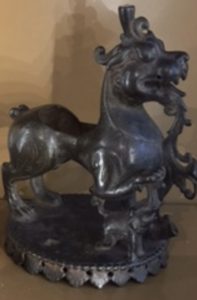
Also Please notice the resemblance between our current lot in comparison with the carved Deccani Lion which can be found at the Golconda Fortrelief wall carving near the Patancheru Gate (Darwaza) in Golconda.
